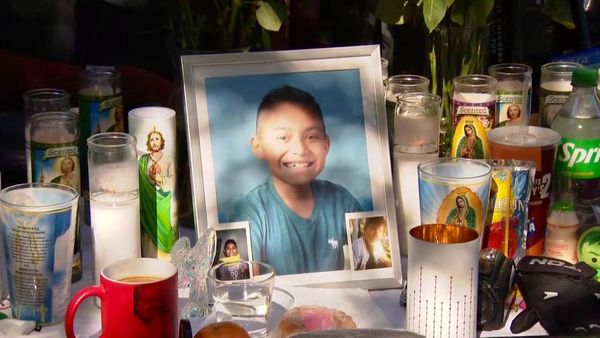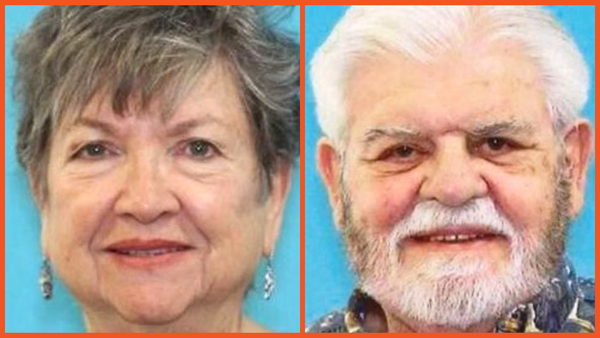
The death of the prominent Al Jazeera journalist Anas al-Sharif, killed along with four colleagues in an Israeli airstrike on Sunday, prompted condemnation from around the world, as hundreds of mourners carried their bodies through the streets of Gaza City.
Sharif, one of Al Jazeera’s most recognisable faces in Gaza, was killed while inside a tent for journalists outside al-Shifa hospital in Gaza City on Sunday night. Seven people were killed in the attack, including the Al Jazeera correspondent Mohammed Qreiqeh and the camera operators Ibrahim Zaher, Mohammed Noufal and Moamen Aliwa, according to the Qatar-based broadcaster.
On Monday, the Guardian visited the site where the journalists were killed. Wadi Abu al-Saud, a Palestinian journalist who was near the tent when the Israeli strike occurred on Sunday, said the attack happened at 11.22pm, just after he had finished filming his latest news bulletin.
“I entered the tent opposite theirs, raised my phone to make a call, and then the explosion occurred, Saud said. “A piece of shrapnel hit my phone. I looked back and saw people burning in flames. I tried to extinguish them. Anas and the others had died instantly from the strike.”
In two videos of the aftermath of the strike, Saud can be seen carrying the bodies of those killed. “From now on, I will not continue the coverage,” he said. “I will return to my life as a citizen. The truth has died and the coverage has ended.”
The Israel Defense Forces (IDF) admitted carrying out the attack, claiming Sharif was the leader of a Hamas cell responsible for rocket attacks against Israel – an allegation that Al Jazeera and Sharif had previously dismissed as baseless.
It was the first time during the war that Israel’s military has swiftly claimed responsibility after a journalist was killed in a strike.
Pro-Israel advocates on social media hailed the killing of Sharif and posted photos handed out by the IDF of photos the journalist took with the former Hamas leader Yahya Sinwar, taken before Hamas’s attack on 7 October.
Sara Qudah, the Middle East and north Africa director at the Committee to Protect Journalists (CPJ), said: “Israel’s pattern of labelling journalists as militants without providing credible evidence raises serious questions about its intent and respect for press freedom.”
In July, Sharif told CPJ that he lived with the “feeling that I could be bombed and martyred at any moment”.
Reporters Without Borders condemned the “acknowledged murder by the Israeli army” of Sharif in Gaza and called on the international community to intervene.
Keir Starmer’s spokesperson said: “We are gravely concerned by the repeated targeting of journalists in Gaza. Reporters covering conflicts are afforded protection under international humanitarian law and journalists must be able to report independently without fear, and Israel must ensure journalists can carry out their work safely.”
The UN human rights office condemned the targeting of the journalists’ tent, saying it was “in grave breach of international humanitarian law”.
Al Jazeera said the attack was “a desperate attempt to silence voices in anticipation of the occupation of Gaza” and called Sharif “one of Gaza’s bravest journalists”.
People gathered at Sheikh Radwan cemetery in the heart of the Gaza Strip to mourn the journalists, whose bodies lay wrapped in white sheets at al-Shifa hospital before their burial. Friends, colleagues and relatives embraced and consoled one another.
The area where the attack took place was crowded with media workers on Monday, some speaking to cameras or mobile phones, others taking photos.
Islam al-Za’anoun, a news correspondent for Palestine TV and several Arab channels who participated in the funeral, said Sunday’s attack was “a turning point in the world of journalism”.
She said: “Despite all the threats he received and the Israeli media’s incitement against him, al-Sharif continued reporting. Now one question haunts me: Who will be next on the list? Will it be me?”
Bilal Abu Khalifa, a presenter at Al Jazeera, said he had met Sharif four days ago. “He told me he was in danger,” Abu Khalifa said. “I asked him not to go out or appear publicly too often. He gave me a very simple answer: Bilal, I will not leave Gaza except to the sky! I will not leave Gaza even if I am killed. I know I am on the assassination list, but I will continue to expose the crimes of the Israeli army against my people and show the world, and everyone who stands by them, the truth.”
In a final message, which Al Jazeera said had been written on 6 April and which was posted to Sharif’s X account after his death, the reporter said he had “lived through pain in all its details, tasted suffering and loss many times, yet I never once hesitated to convey the truth as it is, without distortion or falsification.”
He continued: “Allah may bear witness against those who stayed silent, those who accepted our killing, those who choked our breath, and whose hearts were unmoved by the scattered remains of our children and women, doing nothing to stop the massacre that our people have faced for more than a year and a half.”
After the Hamas attacks on 7 October 2023, Israel barred international journalists from entering Gaza – one of the rare moments when international reporters have been denied access to an active war zone. Since then, the task of documenting the war has fallen heavily on Palestinian journalists, often at the cost of their lives – themselves caught in its devastation, displaced multiple times, their homes reduced to rubble, friends and relatives killed, and at times queueing for food at perilous distribution points.
According to Gaza’s government media office, 238 journalists have been killed by Israel since the war started. CPJ said at least 186 journalists had been killed in the Gaza conflict. Israel denies deliberately targeting journalists.
In a report released this year, the Watson School of International and Public Affairs’ costs of war project said more journalists had been killed in Gaza than in both world wars, the Vietnam war, the wars in Yugoslavia and the US war in Afghanistan combined.







